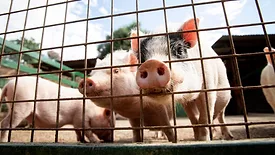Home » study
Articles Tagged with ''study''
BIZTRACKS
Researchers Develop Active Packaging That Senses, Preserves Food Quality
November 26, 2025
Never miss the latest news and trends driving the food safety industry
eNewsletter | Website | eMagazine
JOIN TODAY!Copyright ©2025. All Rights Reserved BNP Media.
Design, CMS, Hosting & Web Development :: ePublishing











